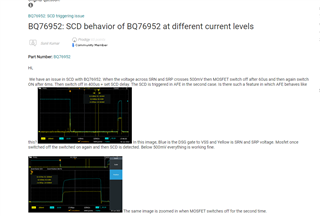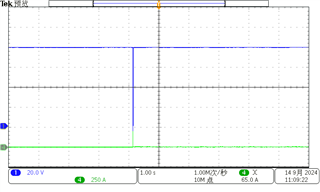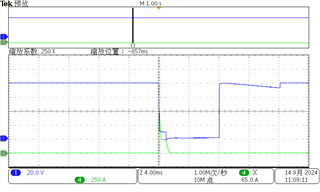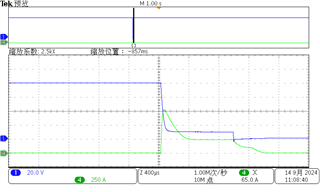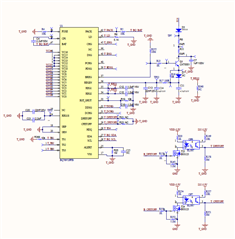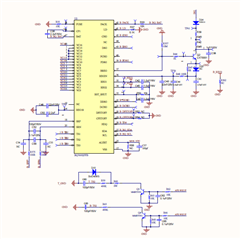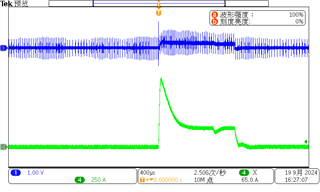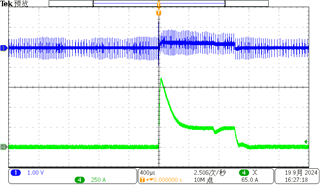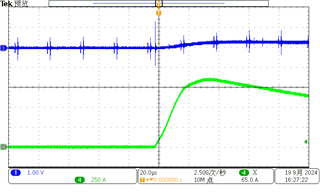Tool/software:
Dear TI,
Recently, we were debugging the SCD functionality of BQ76952 and encountered some issues. We used a large instantaneous current (250A within 400us) to trigger the SCD, but we found that the instantaneous current did not trigger the SCD normally.And then when we used a slower rising current(250A within 0.5ms), it did. As shown in the following picture:
instantaneous current:
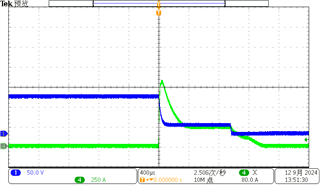
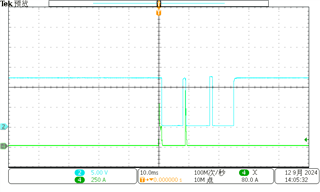
slower rising current:

Our configuration is as follows:
Protections:SCD:Threshold->6 = 125mv
Protections:SCD:Delay->28
Protections:SCD:Recovery Time->30
Looking forward to your prompt reply.
Best Wish



